Classic Car Restoration: The Definitive Guide
02 March 2021
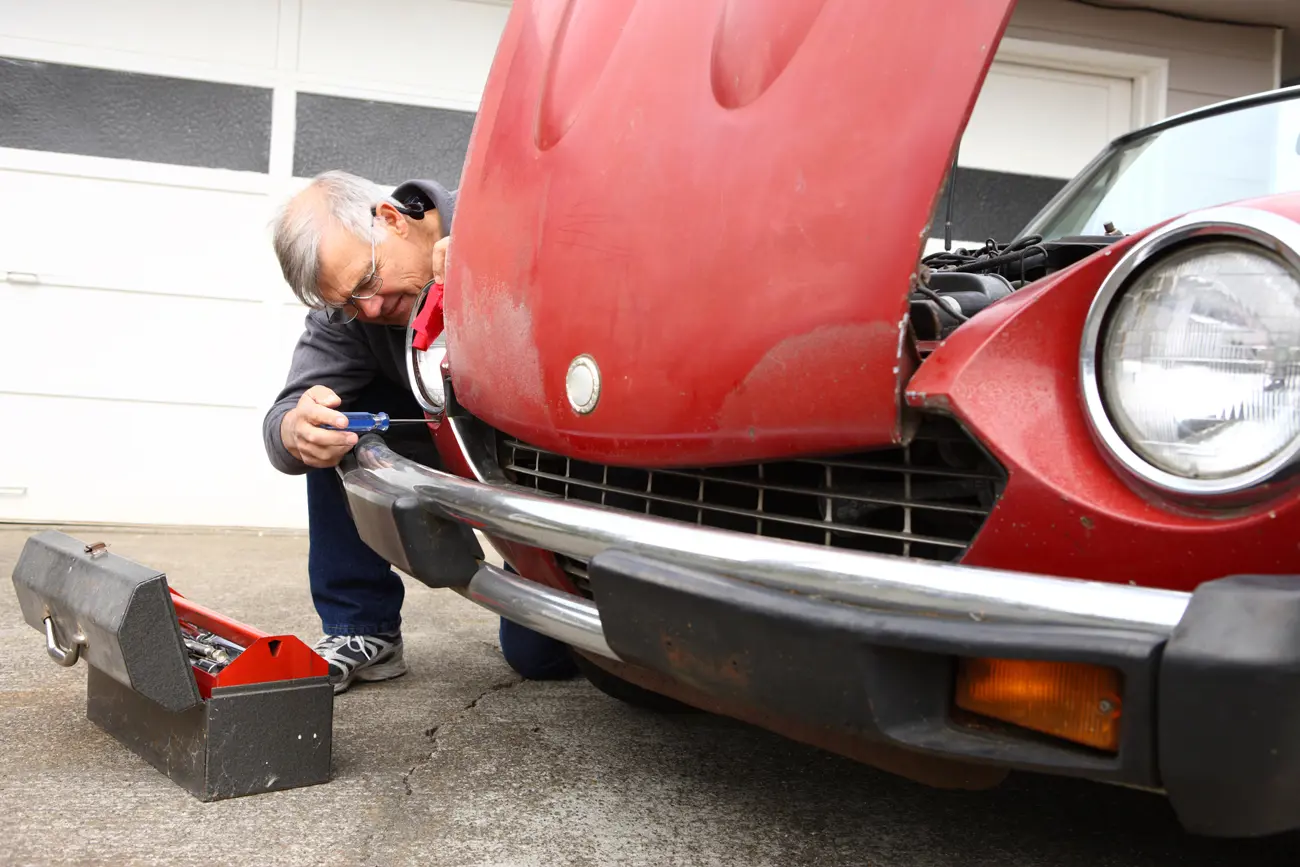
Restoring a classic car really is a labour of love – at least, it should be. Given the hundreds of man hours and potentially thousands of pounds that need to be invested in any restoration project, it’s crucial that you get an outcome that you’re happy with.
The key to happy outcomes lies in the planning. You should be under no illusions when embarking on a classic car restoration project and have a firm grip on what’s required so that you can lay the right foundations.
From choosing and buying the right classic to the nuts and bolts of bringing your vehicle back to its best, this ultimate go-to guide will help you to point you in the right direction.
Classic car restoration is not something that you should try to attempt without having some expert advice alongside you, guiding you along the way. We hope that this guide will be an indispensable source of information that gives you the confidence to make your classic car restoration project everything you want it to be.
Contents
- Is classic car restoration right for you?
- Choosing the right car
- Top buying tips
- Looking for signs of rust
- Deciding on your restoration
- Preparing to restore your classic
- Getting down to work
- Some final dos and don’ts
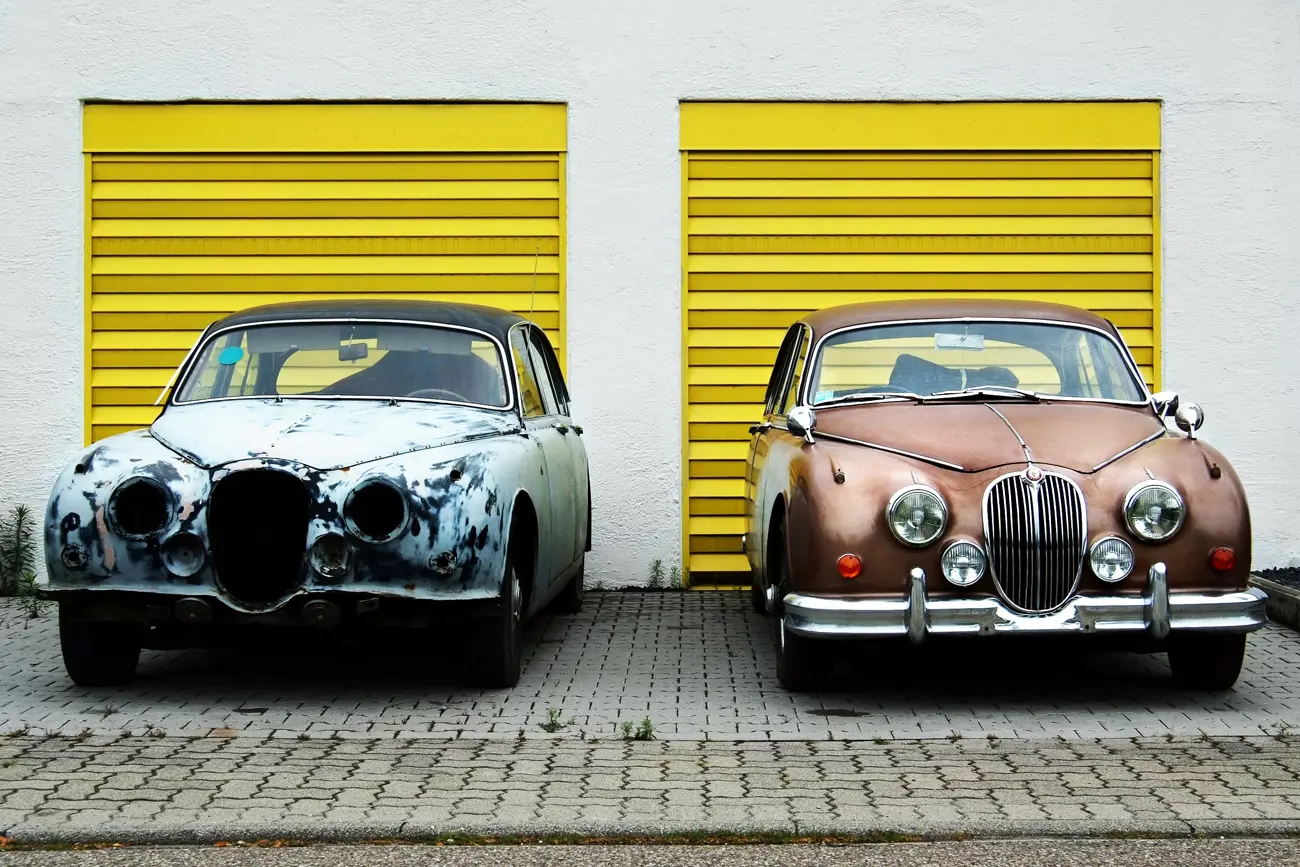
Is classic car restoration right for you?
If your experience of classic car restoration begins and ends with watching TV programmes, you might have a somewhat skewed idea of what restoring a historic vehicle actually involves.
In reality, you will need to have a lot of time, money and energy to pull off the kind of results you see on TV. So, before you go out and buy the classic which will be your main focus for months on end, you need to be honest with yourself about a few things to ensure you don’t end up biting off more than you can chew.
Here are some questions to ask yourself before embarking on a new project:
- Do you have an emotional interest in the car? There are many reasons you might undertake a classic car restoration. Perhaps you’ve inherited a historic vehicle from a relative or you simply want to try and make a profit by selling your restoration. Whatever your reason, it’s important to have an emotional interest in the car, which will fuel you through to completion and help you overcome any bumps in the road along the way.
- Do you have enough time? As we’ve already alluded to, you’ll need a significant amount of free time to complete a car restoration project. The odd hours here and there simply won’t cut it – your project will end up dragging on for what seems like forever and you might not have the stamina or the motivation to see it through to its end. So, you need to consider your circumstances – if you work long hours or have personal commitments that must come first, a car restoration project might not be for you.
- Do you have enough funds? According to Simoniz, restorations can cost anywhere between £15,000 and £40,000 depending on how extensive the work is. So, you need to have sufficient funds available, bearing in mind that some parts might end up costing you more than you envisaged and that you can’t foresee all the issues of a car restoration project at the start. The last thing you want is to get halfway through restoring your classic then run out of money. While it is possible to find a classic for a few grand that only needs a bit of work, it might not prove as rewarding as a bigger-budget project. But if you’re just starting out, small might be the way to go.
- Do you have the right mindset? Car restoration isn’t for everyone. Whilst it can prove very rewarding (and profitable, at times), it can also end up as a huge source of frustration and worry if you haven’t got the right mindset for it. Ideally, you need to be a patient person who understands that you’re not going to see significant results straight away. In fact, many first-time restorers find themselves getting frustrated at the speed of progress. So, a bit of self-evaluation is necessary before you head to auction. As well as being a patient and meticulous person, you need to have a thirst for learning new things and understand that there will be the odd hurdle along the way.
Choosing the right car
If you’re sure you can tick all the boxes, the biggest decision you’ll make during your car restoration project is, of course, choosing the vehicle which will be front and centre of it.
We’ve already mentioned how important it is to be emotionally invested in your vehicle – a car that you’re nonplussed about will not inspire you to keep going when the going gets tough.
Some classic car enthusiasts will already have a vehicle in mind that they want to restore. But that’s not true of everyone. If all you know is that you want to try your hand at restoring a classic, you might want to make a list of all the cars you’ve owned and/or loved and consider if they’d make for a good restoration project. You should consider each vehicle in line with your budget, skills and goals. For example, if you want to turn a profit, you’ll need to think about whether you can reasonably expect to increase a car’s value.
If you don’t have an automatic affinity with any particular classic, you have the freedom to look around for a car that resonates with you and your personality. If you’re in need of some inspiration, here are some classics which can make for greats cars for first-time restorers:
MGB Roadster
If you like the idea of owning and doing up a classic sports car, the pretty and practical MGB has great appeal. It’s got a straightforward spec, it’s easy to work on and provides a characterful driving experience. In addition, it has excellent parts availability and club support.

Ford Anglia 105E
If you like more American styles, the 105E – arguably the most distinctive Ford to come out of the 1960s – could be up your street. With values on the rise and being reasonably cheap to maintain, it ticks a lot of boxes for a restoration project.
Porsche 924
If the allure of the Porsche name appeals to you, the original affordable Porsche, the 924 makes a superb introduction to Porsche ownership. Values are rising, but you can still get your hands on 924 for a reasonable price, and you could turn a pretty profit with the right restoration.
Mazda MX-5
This ever-popular MX-5 is a great first-time choice, combining charming styling and a superb driving experience with usability and amazing value for money. If you decide that an MX-5 is the car for you, rust will be the biggest thing to look out for.

Volkswagen Golf MkII
In many ways, a second-generation Golf is the car which you can’t go wrong with when it comes to a restoration project. With 6.3 million units produced during its lifetime, you have the pick of the models and parts are plentiful. So, if you just want something on which to learn the ropes of car restoration, opt for one of these little workhorses.
Citroen 2CV
This French motoring icon, launched in 1948, has a distinctive, economical design that is economical and is a lot of fun to drive. Having been in production for 40 years, they’re fairly easy to come by and remain a relatively affordable buy. The 2CV is perfect for first-time owners for many reasons which includes having a superb support network of clubs and specialists on hand.
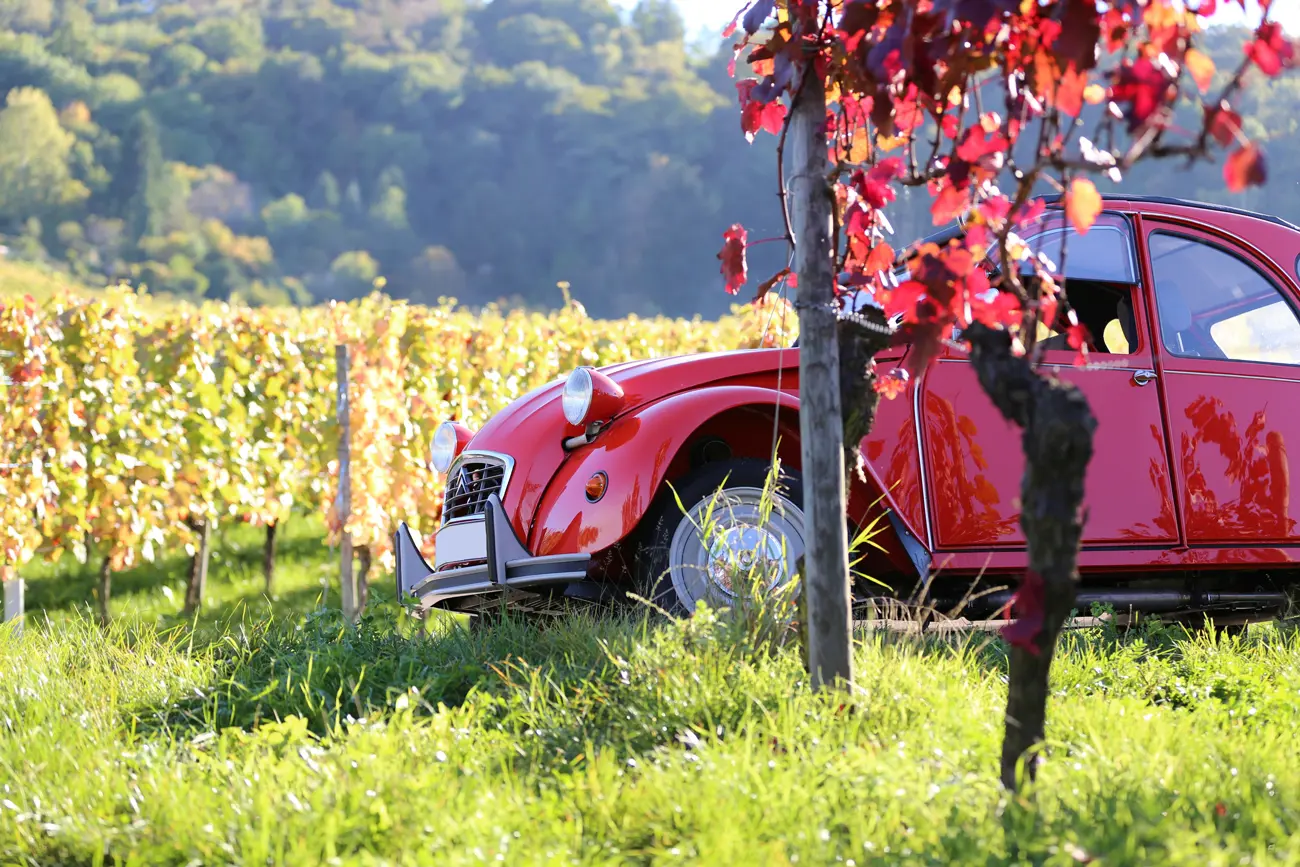
Top buying tips
So you’ve decided on the model you want to restore, next comes the scary bit: handing over that hard-earned cash for the car you want. But it doesn’t need to be a daunting prospect, provided that you do your research and know what you’re looking for. You can also check out the 2023 Practical Classics Classsic Car and Restoration show for more information on the topic.
Confirm you’ve made the right decision
To confirm that you’re going in pursuit of the right vehicle for you, look through buyers’ guides to research the upsides and downsides of the model you’re interested in. This will enable you to gauge whether you’re on the right tracks or if you should have a re-think. Try to focus on things like common problems, the availability of spare parts and prices, as these are elements which many restoration projects live and die on.
Also, seek out the classic car club for the model in question. Owners clubs are often only too happy to provide their expertise and advice, knowing that if they create a good impression, they could increase their membership. Generally speaking, the people who run owners’ clubs are the most helpful and knowledgeable people you can find, who really care about keeping these wonderful cars on the road.
You should come away from your research knowing whether or not to press ahead with the purchase of your desired model. If so, you should now have a clear idea on the exact model you want to find such as the colour, engine, transmission, body shape and interior trim.
Look in the right places
When it comes to buying your classic, you have three options: buy from a dealer, find a private seller or go to auction.
If you buy from a dealer it’s generally more expensive but with the fallback of being able to go back to them with any issues. They may also provide a warranty. Buying from a private seller, you may not have many options if things go wrong but you may have better luck haggling down the price.
Before going to see the vehicle in person, phone ahead for more information. If the seller can’t give you a full breakdown of the car and its history, you should consider walking away from the deal. Enthusiastic owners with an extensive knowledge of the car are what you want.
Alternatively, if the car goes under the hammer at auction, you will be given the opportunity to carry an inspection of the vehicle before bidding starts. Remember, the auction catalogue might only tell you half the story – the car’s flaws are unlikely to be listed for everyone to see so a closer inspection by an experienced, mechanically minded friend might be in order.

Look for signs of rust
When carrying out inspection checks of any classic, you should be on the lookout for the ultimate enemy: rust. While it’s rare to find a decades-old vehicle that’s completely rust free, you don’t want to invest in something that is going to prove more trouble than it’s worth.
Sometimes you can repair a rust patch and restore a classic car to full health, but not always. So, you need to know your rust in advance of any viewing appointments.
There are three different types of rust, according to Autotrader:
-
Surface rust
Surface rust is relatively superficial, occurring when the paint has worn thin and moisture from the air has attacked the surface metal. The good news is that it is fairly easy to repair and unlikely to spread, as long as you catch it in time.
-
Pitted metal
Pitted metal often looks worse than it is, having penetrated the body panel to the point of creating pits in the surface – but, crucially, it has not yet rusted through the metal. With the right treatment, you can still get the panel looking new.
-
Rusted-through panels
When a panel has rusted through, it’s effectively beyond repair. Even if you do manage to get rid of the rust, there’s a good chance that it will return. The hard and fast rule is, if you can see through a steel panel, you will need to replace it.

Stick within your budget
If you’re happy with what you see, it’s time to make an offer. But you should always try to stick within your budget. After all, the more you eat into your capital with the purchase of the vehicle, the less money you’ll have to play with when it comes to restoring it. Again, you don’t want to find yourself in a position where you run out of cash before the project is complete.
With that in mind, don’t be afraid to put in a low offer. You never know your luck. When making your offer, summarise any faults you’ve discovered on the car during your close inspection. As much as anything else, this will make you sound like you know what you’re talking about and convince the seller that you’re making a fair offer.
While it’s good to drive a hard bargain, be mindful of putting people’s backs up. This could go against you if you really want the car in question.
The same principles apply at auction. Once your lot goes under the hammer, don’t let adrenaline get the better of you and stick to your limit. They’ll be a very good reason that you’ve set yourself a specific limit. That’s what you deem the car is worth. It’s also a reflection of what you can feasibly afford.
Deciding on your restoration
Once you’ve got your hands on your classic, it’s up to you what you do with it. If you want to stick a big modern exhaust on it, that’s up to you. But, if you plan to sell on your classic for a profit, such an adaptation might not have the desired effect of increasing its value…
Opinion is split on whether it’s acceptable to modify a classic with modern parts. Some think it is fair game if you’re improving the driving experience, while others say it is messing with the history of the car.
But it’s important that you are sure with how you are going to go about your restoration before you get your tools out. Find out more from our blog on the main differences between original, restored and resto-mod. There are three ways you can go about it:
Keep it ‘original’
If you’ve got your hands on a classic that has managed to get this far without requiring a mechanical or aesthetic alteration, you’ve got yourself an ‘original’ car. However, be mindful of just taking a seller’s word for it if they claim it to be original. Finding a true original classic is pretty rare and they usually command a hefty valuation.
The most fail-safe way to determine if a classic car is original is to look for matching numbers on the major components of the vehicle, which would’ve been stamped or cast during production. If the serial number is consistent throughout, you can be reasonably sure that it’s an original.
As you might imagine, restoring an original car can be tricky going as it means replacing parts like for like. However, there is potentially some money to be made from acquiring an original car – especially if you manage to put some value on it.
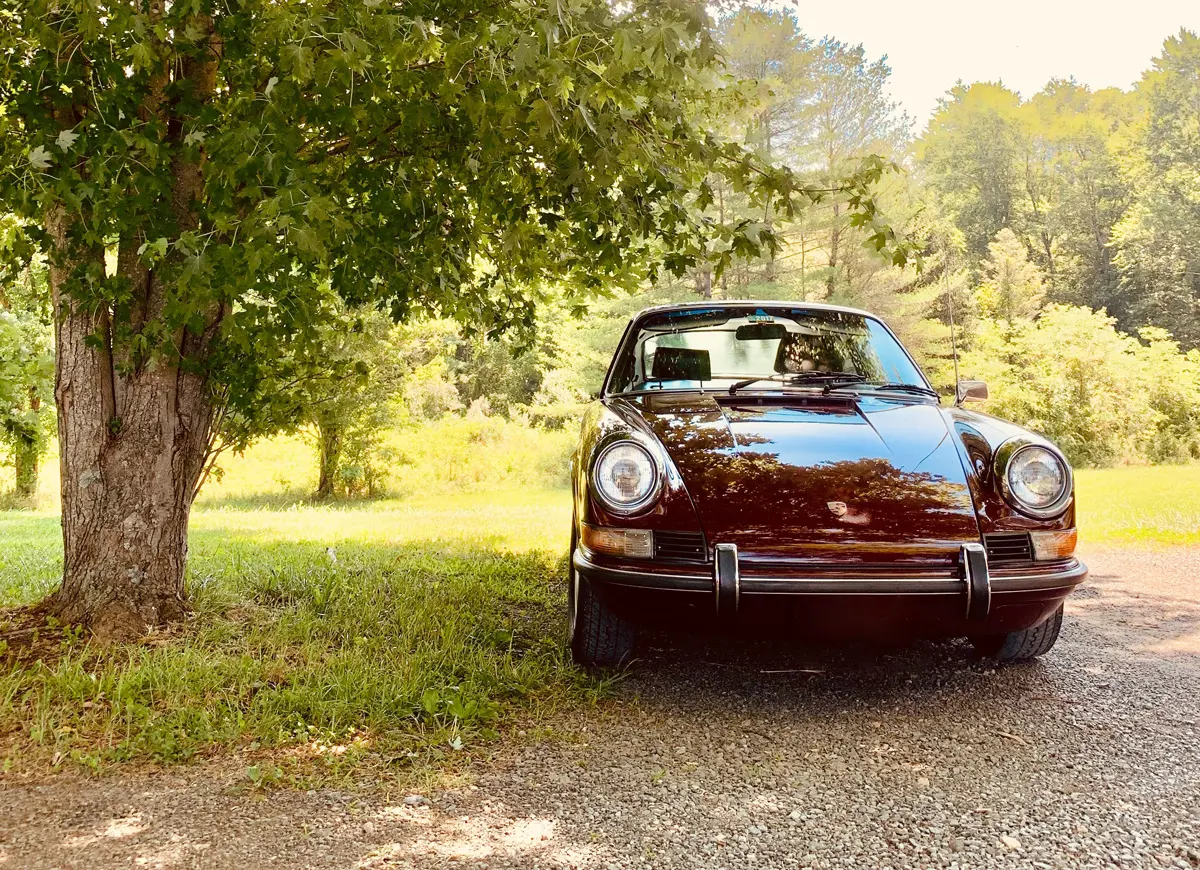
Restored cars
While historic car enthusiasts might dream of finding themselves an original classic, if you can’t drive it due to a mechanical fault or its age has taken a toll on the bodywork, it might be preferable to try and restore it back to somewhere near its original condition.
Sure, it can be a lot of hard work sourcing the spare parts and then replacing old, broken components. But restoring a car can be extremely satisfying. If you do it sensitively to the spec, most people won’t be able to detect any difference between an original and a restored car. That way, you can get out on the road and enjoy your classic, without the worry of thinking you’re going to do some irreparable damage to it.
When restoring a car, the goal is to reverse the signs of ageing and return it to what it looked like the day it rolled off the assembly line.
Resto-mod
As we say, there are no rules to classic car restoration. You paid the money for your vehicle, so you have free rein on what you do with it. If you did want to add a modern part onto your classic car as part of the restoration, your vehicle may be classified as a “resto-mod”.
Again, a resto-mod vehicle will look nothing out of the ordinary to most people – modern alterations are usually slight like a new sound system or new parts having been fitted under the hood.
A classic car owner might look to modernise their classic for any number of reasons. For example, they want to make it compliant with modern emissions or safety standards. Or perhaps they just want to improve the driving experience of their historic vehicle.
Preparing to restore your classic
With a clear vision of how you’re going to go about your classic car restoration, you can begin to prepare for your project. Before kicking things off, you need to buy the right tools, secure a space big enough to accommodate your vehicle and buy the parts that your classic needs.
- How much space do you need? A restoration can be done in a normal-sized garage, but it all depends on how big the garage in question is and the dimensions of your classic car. Securing the right space is key to productivity. If you find that you’re constantly knocking your knees and elbow as you work on your vehicle, you’re going to get fed up pretty quickly. Of course, you can bring the car out of the garage to work on it – but if the weather isn’t in your favour, it’s another reason to put off getting your tools out.
- What tools do you need? There’s a decent chance you might already have many of the tools that you’re likely to need: spanners, pliers, hammers and screwdrivers. These tools will allow you to carry out most of the work required to restore your classic. But you might need a few more tools that aren’t present in your average toolbox. For example, a telescopic magnet is considered an essential purchasing for locating a nut or bolt that has fallen into the engine bay. If you need to reshape a panel or repair a bump in your car’s bodywork, you will need to invest in an English wheel. But you won’t know what tools you need exactly until you’ve sussed out what needs to be done as part of the restoration.
- What work does your vehicle need? If this is your first restoration project, the quickest way to work out what is required to restore your classic back to its best is to seek out a specialist garage who will be able to advise you accordingly. Even with a thorough check-over upon buying the vehicle, it’s not always possible to see all the faults. If you don’t want to take your classic to a specialist, you can either go and buy a workshop manual and check the vehicle over yourself if you feel confident doing so, or speak to someone who has already done the same restoration project.
- Where can you buy parts? Your findings from ascertaining what your vehicle needs will lead you to a hunt for parts. Hopefully, having thoroughly researched the vehicle you were going to buy, parts will be easily available. But there’s always one or two parts which prove hard to come by during any restoration project. The internet will prove your biggest resource when sourcing parts, while many car clubs operate simply as parts dealers for restorers. For the parts which aren’t readily available, you may have to make them. This isn’t usually as daunting as it sounds, but don’t buy off more than you can chew. Lots of basic elements – washers, discs, plates, nuts and other threaded items – can be made without needing too much skill. When it comes to making your own parts, YouTube is your best friend – just search the part you’re going to attempt to make, which will also show you what tools you’ll need.

Getting down to work
After all that research and preparation, you can now get down to work on your classic car restoration knowing you’ve done everything you can to set your project up for success. However, you’ll probably still go in with only a scant idea of how it’s all going to play out. You need to prepare for bumps in the road, but take reassurance in knowing that you don’t need to be a professional mechanic to do a great job of restoring your vehicle.
Let’s look at the different elements of a classic car restoration so you know what to expect:
Engine
While the thought of getting to work on the engine may seem overwhelming, they often prove one of the easier things to mend. It’s just about being able to follow instructions and knowing your way around your hand tools. If you’re adept with spanners, measuring and cleaning things, you’re halfway there.
Upon dismantling your engine, you should have the parts chemically cleaned. An engine shop will have proper chemical cleaners to save you the rigmarole of doing it yourself.
When it comes to putting your engine back together, search out engine diagrams and guides online (for your specific vehicle) which will tell you all you need to know about torque settings etc.
If a complete engine rebuild is required, it’s probably best to seek out a specialist who might point you in the direction of a readymade rebuilt engine and you can simply swap out our old one.
Bodywork
Bodywork often turns out to be the bit that catches out the first-time restorer. That’s because it requires skills and tools that most hobbyists won’t have. Generally, only specialists can beat panels. If panel replacement is necessary, it’s possible to carry this out yourself providing that the panels are bolted on. Cars with monocoque bodies - which the chassis is integral with the body – will require welding, and, again, you might want to leave this to the specialists unless you are particularly handy with a welder.
When it comes to addressing rot, if you find surface rust, you can make good by sanding down the affected area to the bare metal, then applying a paint primer before colour matching to the rest of the bodywork.
For pitted metal, sand down the panel to the bare metal; you can use a phosphoric acid-based product to encapsulate the rust if you’re having trouble clearing it. Once it has been smoothed, primer can be applied to cover the surface.
Rusted-through panels will need to be replaced.
Painting
Be careful of making the mistake of painting their car too soon. It’s a common error amongst first-time restorers who just want their classic to sparkle straight away. But ultimately, you could end up having to drill holes through your newly painted finish having discovered that more work needs to be done.
Painting should be one of the last jobs, once you’ve got the car up and running and rust-free. See it as a reward for all the efforts that have gone before it.
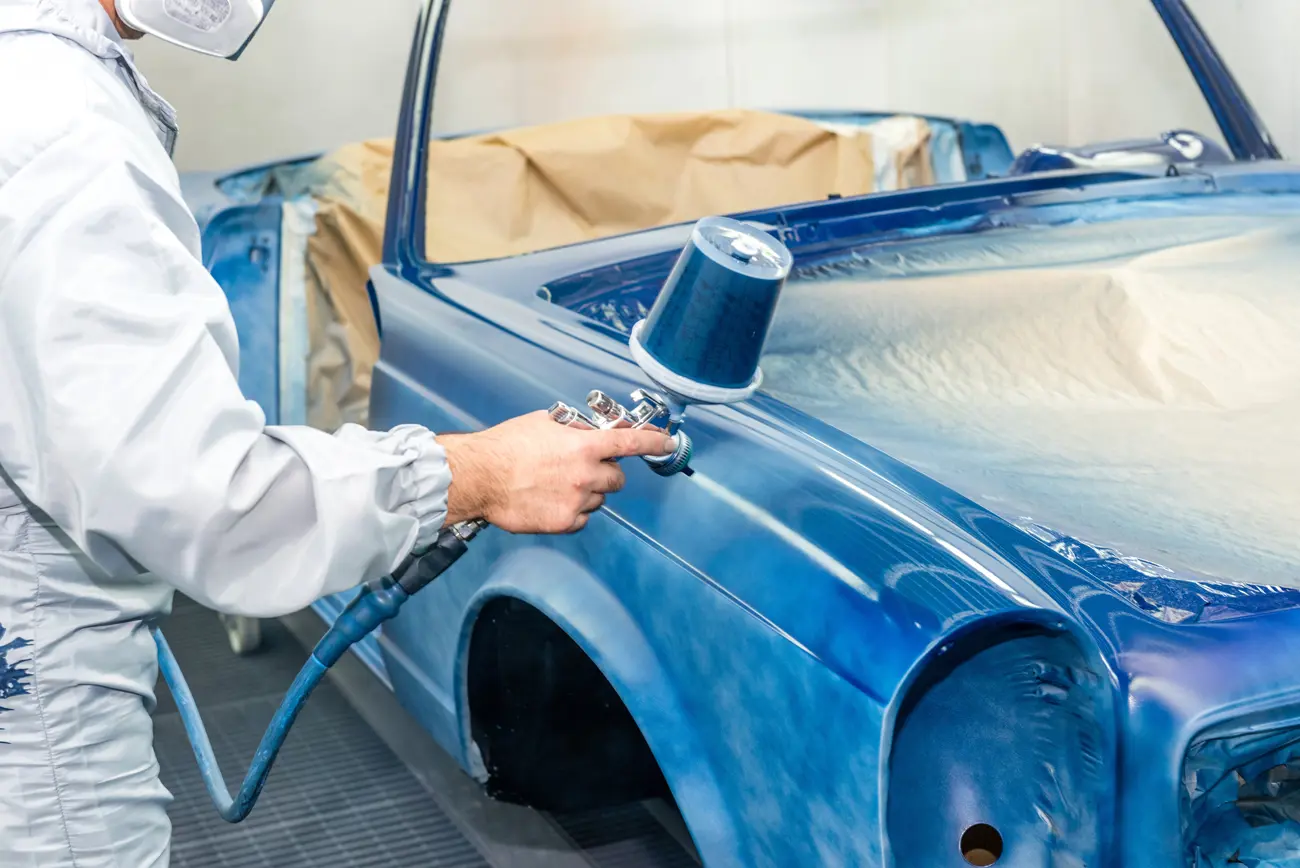
Electrics
Again, when it comes to the electrics of your classic, it depends on your previous experience with wires. Looming a car yourself is doable, but it can take considerable time and detailed work. But dynamos, alternators, starter motors are all repairable even if you have limited electrical experience.
Upholstery
Upholstery is another area where first-time restorers reach out to the specialists because doing it yourself requires specialist tools (e.g., an industrial sewing machine) and specific skills (e.g., being able to sew).
If you’ve got a decent budget to play with, you might want to buy a readymade interior kit and simply have someone install it. These can set you back a couple of thousand pounds.
Some final dos and don’ts
So, there you have it. You have everything you need to commence your classic car restoration project in haste. To sum things up, here are some dos and don’ts to keep in mind as your progress throughout your project:
Do
- Acquire a classic which you feel emotionally invested in
- Choose a restoration type based on your goal
- Spend time preparing for your restoration, securing a suitable space, some hand tools and working out what your classic needs
- Use specialists when you don’t feel confident with doing the work yourself
Don’t
- Take on a restoration project if you don’t have enough time to commit to it
- Expect to make it through a restoration project without plenty of knockback
- Buy a vehicle without having seen it first
- Risk running out of funds – make sure you’ve got the budget for the project beforehand
That’s our go-to guide to restoring classics. All that’s left to say is, good luck and let us know how you get on.
